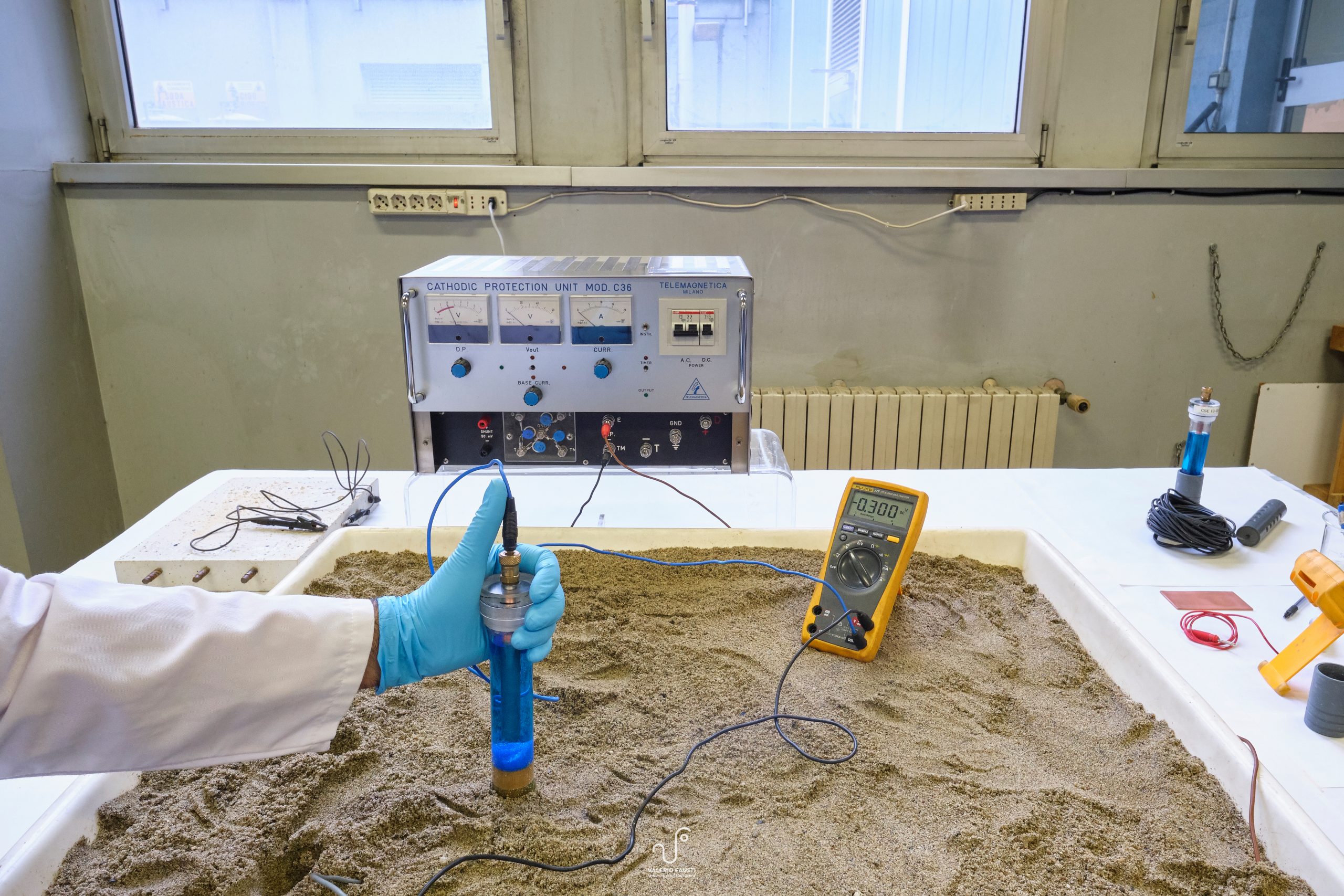“Cathodic protection is an electrochemical technique of corrosion prevention and protection, which can be applied to metallic materials in contact with aggressive environments with appreciable electric conductivity. It is performed by inducing a current flow from an anode, positioned in the environment, and the surface of the structure to be protected (cathode): by decreasing the potential of the metallic material, this current reduces the corrosion rate until it stops.”
Extracted from: Protezione Catodica, L. Lazzari, P. Pedeferri, M. Ormellese

Among the exixting corrosion protection techniques, cathodic protection has a leading role. In this frame, the activities of the PoliLaPP research group are distributed in all phases concerning the cathodic protection of a structure, with particular attention to the electrochemical aspects of the technique and to technological advancements.
Current research activities include:
- monitoring techniques for cathodic protection, with particular reference to potential probes
- chemical effects related with cathodic protection (activity in collaboration with Università degli Studi di Palermo and SOLINANO-Σ LAB of Politecnico di Milano)
- effects and protection criteria in presence of direct and alternating current interference on buried metallic structures
- use of finite elements methods to design and manage cathodic protection systems
- cathodic protection and prevention of stainless steel in the presence of chlorides